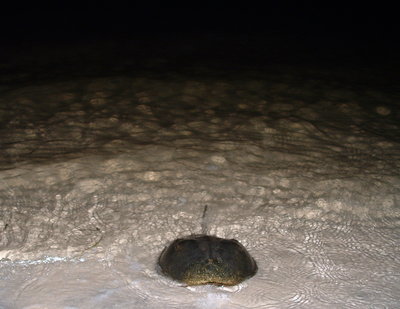As of midnight on Saturday, it will be illegal to harvest horseshoe crabs for the rest of the year. The yearly quota for harvesting is 150,000 crabs, which has already been exceeded by fishermen, says the New York State Department of Environmental Conservation.
 In a recent press release, the DEC estimates that 170,897 crabs have been harvested in 2012 as of November 28. Most horseshoe crab harvesting takes place in the spring, but thousands are still harvested in the fall and winter. This year, over 169,000 crabs were taken in the spring alone.
In a recent press release, the DEC estimates that 170,897 crabs have been harvested in 2012 as of November 28. Most horseshoe crab harvesting takes place in the spring, but thousands are still harvested in the fall and winter. This year, over 169,000 crabs were taken in the spring alone.
Horseshoe crabs are not typically eaten as a meal but are instead harvested to use as bait in fisheries. Recreational harvesters are allowed to take five horseshoe crabs per day, but the crabs “may not be offered for sale and must be for the harvester's own personal use,” according to DEC regulations.
Since the yearly quota was so quickly exceeded, the DEC plans to meet with horseshoe crab permit holders to review harvest quota management for 2013.
Horseshoe crabs are prevalent in the Long Island Sound, and are considered to be “living fossils,” as they have evolved over 200 million years ago. These crabs have a unique type of blood that has bacteria-fighting abilities. Their blood continues to be used for research and testing in biomedical and pharmaceutical applications.
To harvest horseshoe crab blood, the crabs are caught, bled, and then returned to live in the wild.
Share your thoughts on this article by posting a comment below or by visiting our Long Island Living discussion forum.










